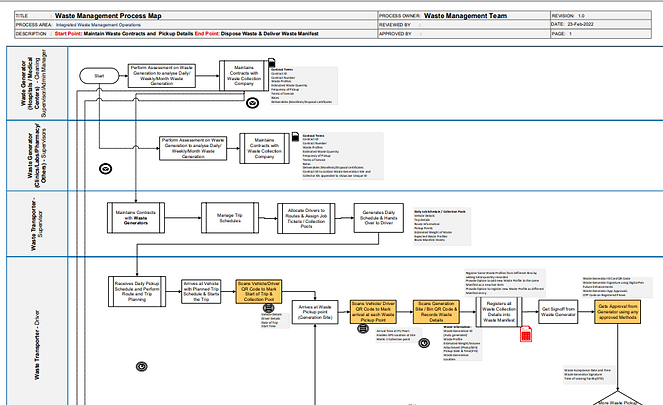

PROCESS
DESIGN
.png)
Process Design: Phase 1 - Sketching
Our process design journey begins with a critical step: sketching. In this initial phase, we bring ideas to life with rough sketches and flowcharts, mapping out each stage of the process. This visual foundation allows us to explore different paths, anticipate challenges, and align on the overall structure of the system before diving into development. Sketching is where our concepts take form, whether it’s an intricate workflow or a streamlined user experience. We believe that by starting with clear, organized sketches, we can capture the essence of what’s needed and set a strong direction for the phases that follow.

Process Design: Phase 2 - Process Mapping
After sketching, we bring clarity to our design by creating detailed process maps in Visio. This stage translates our initial ideas into structured workflows, capturing every step, role, and decision point. Using Visio’s powerful visualization tools, we craft precise, professional maps that serve as blueprints for system implementation. This phase ensures that all stakeholders have a clear, unified understanding of the process, from start to finish. Our detailed process mapping allows us to refine workflows, identify bottlenecks, and set the foundation for seamless execution in subsequent phases.
.png)
Process Design: Phase 3 - High-Level Estimation
With the foundational processes sketched and mapped, we move into high-level estimation. This phase involves calculating the effort and resources required for the design, development, and deployment of the solution. Our high-level estimation gives stakeholders a realistic view of timelines, costs, and resource needs, helping to set expectations and align project goals. By outlining these factors early, we ensure a well-planned approach to the implementation stages, balancing efficiency with effectiveness in every project phase.

Process Design: Phase 4 - Wireframes
The wireframing phase brings the design to life with a visual blueprint of the user interface. Here, we outline the structure and functionality of each screen, focusing on layout, navigation, and core features. Wireframes serve as the bridge between concept and implementation, providing a clear guide for developers and ensuring that the user experience remains intuitive and aligned with project goals. This phase allows for early feedback and refinements, setting the stage for a seamless development process and an effective final product.
This is a wireframe for a Waste Transporter Application showing the key user interface (UI) elements and navigation flow. In the design process, wireframes are essential for mapping out the structure and flow of the application, defining what elements appear on each screen and how users will interact with them. Here’s a breakdown of the different sections in this wireframe:

Process Design: Phase 5 - User Interface Design
In the user interface design phase, we transform wireframes into a polished, interactive design. Using Adobe XD, we create a visually engaging and functional interface, focusing on color schemes, typography, icons, and interactive elements. This phase brings the product closer to its final form, providing a realistic preview of the user experience. By incorporating client feedback and best practices in UX/UI design, we ensure the interface is both aesthetically pleasing and user-friendly, setting the stage for a successful launch.
.png)
Process Design: Phase 6 - Database Modeling
In the database modeling phase, we design the foundational data structures to support application functionality and scalability. This includes defining tables, relationships, and constraints to ensure data integrity and optimize performance. Using tools like ER diagrams, we create a clear blueprint that reflects business requirements and aligns with the application’s architecture. The focus here is on creating a reliable, efficient, and flexible data model that can adapt to future needs, ensuring the backend is robust and ready to support the application
